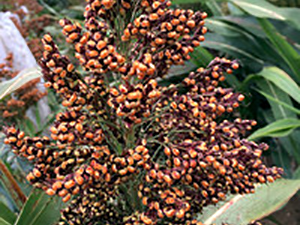
That is important because sorghum is a crop that can respond to climate change because of its high water- and nitrogen-use efficiency, according to Surinder Chopra, professor of maize genetics, and Mary Ann Bruns, professor of soil microbiology. A close relative to corn, it is the fifth most valuable cereal crop globally.
Sorghum can be used for human food and animal feed and also can be grown as a bioenergy crop, producing more ethanol than corn and is better adapted than corn to stresses such as drought, salinity and heat. But increased sorghum production requires increasing its tolerance to chilling and frost stress.
In this study, researchers found evidence that plant genetic variation influences root flavonoids and the composition of the soil microbial community, and low temperatures affect these relationships. The National Institute of Food and Agriculture helped fund this research. For more information, read the Penn State University article.
Farm Bill Priority Areas
Plant health, production, and products
Agriculture systems and technology
U.S. States and Territories
Pennsylvania

